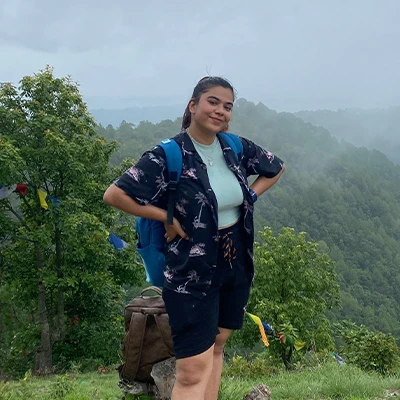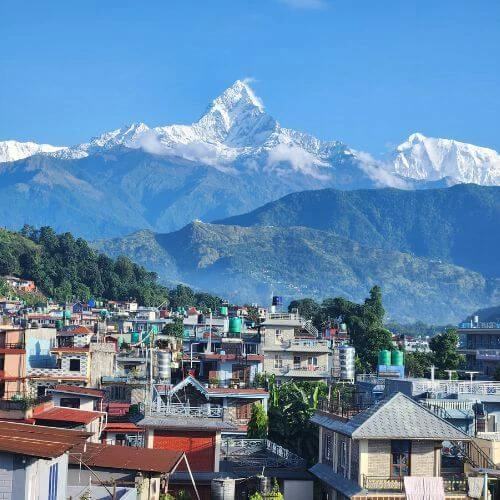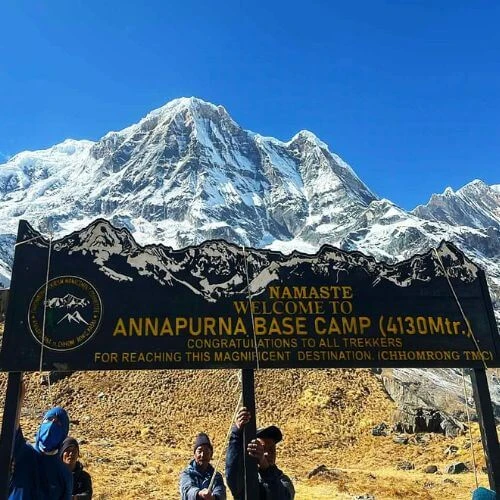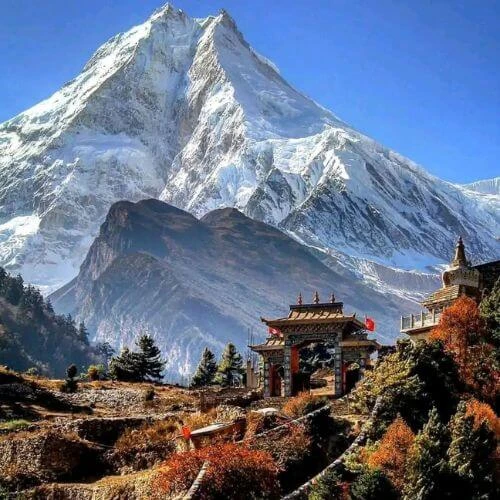To travel and trek freely on the Annapurna Circuit, you would need the Annapurna Circuit Trek Permit. Permits are a way to help regulate trekking activities, protect local environment, and ensure your safety during the journey.
If your goal is to trek in Nepal, then you would need multiple permits related to that specific trail. The most common permits would be the TIMS (Trekker’s Information Management System) and RAP (Restricted Area Permit), while permits like ACAP (Annapurna Conservation Area Permit) are for their own specific trail.
Permits have become mandatory and are regularly checked through multiple checkposts. That’s why, to give you a better view of why permits are necessary, we have written this in-depth guide for the Annapurna Circuit Trek Permit.
If you want our help in arranging your permits and other trekking logistics, check our Annapurna Circuit Trek package for full support.
Why Do You Need Permits for the Annapurna Circuit Trek?
Annapurna Circuit Trek Permits have become a necessary requirement for several important reasons. First of all, permits are a legal requirement enforced by the Nepalese Government for all trekking activities. Carrying a valid permit confirms that you are trekking legally and helps avoid fines or disruption during your trip.
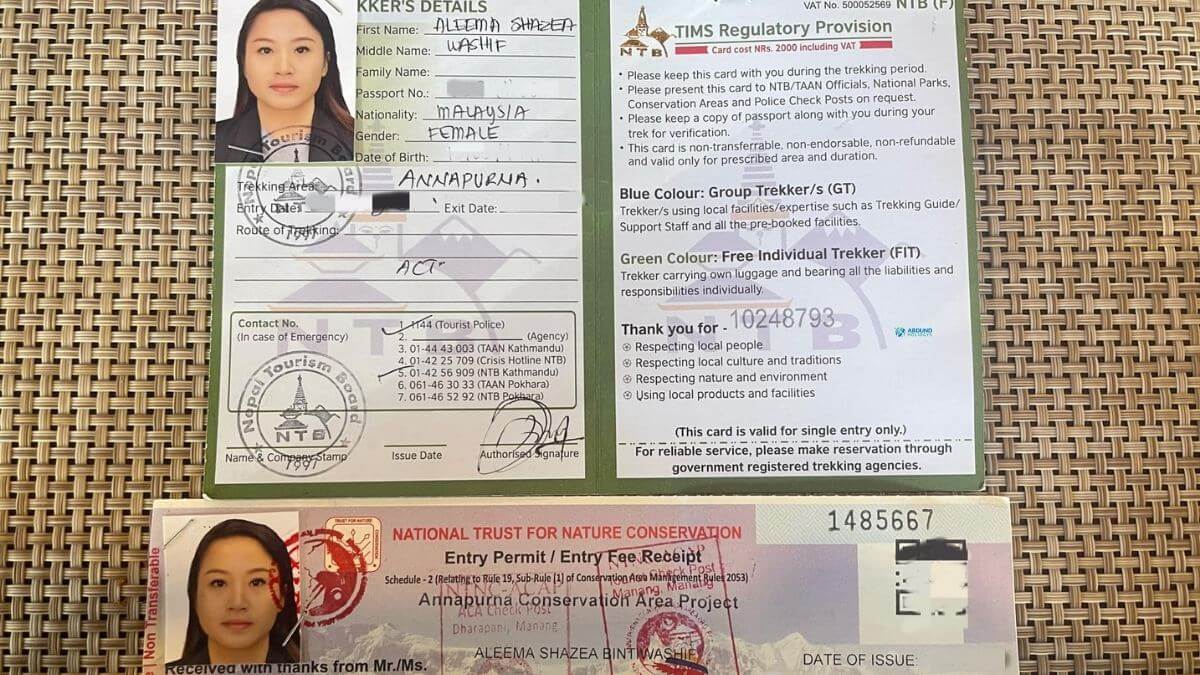
Secondly, permits contribute to protecting the region’s environment and culture. The fees collected through permits help fund the conservation plans and community development projects.
Lastly, through permits, authorized personnel are allowed to monitor trekkers for safety and coordinate emergency response if needed. This is true specially for circuits with high-altitude and remote area.
Types of Permits Required for the Annapurna Circuit Trek
Permit requirement for each trek varies on what the trail ahead holds. In that aspect, Annapurna Circuit Trek needs mainly two permits i.e. ACAP (Annapurna Conservation Area Permit) and TIMS (Trekker’s Information Management System). Though if your Annapurna Circuit Trek extends to parts like Mustang and Dolpo, then you will also need RAP (Restricted Area Permit).
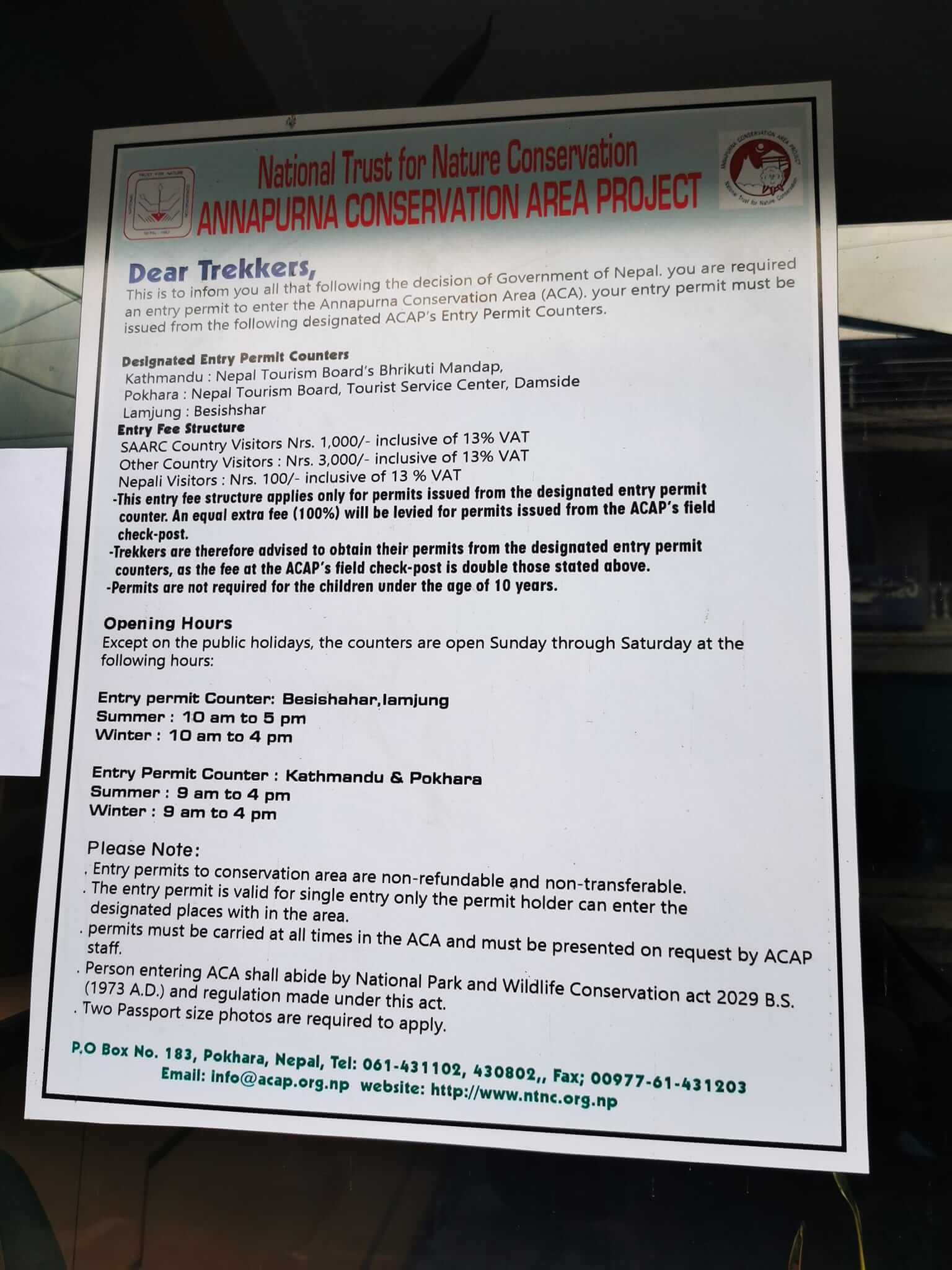
1. Annapurna Conservation Area Permit (ACAP)
The ACAP permit will give you access to the Annapurna Conservation Area. This area is Nepal’s largest protected area with a coverage of 7,629 square kilometers. This permit is essential for anyone who wants to trek in this region.
2. Trekkers’ Information Management System (TIMS) Card
The main reason for needing a TIMS permit is so that authorized personnel can track the trekker’s movements in popular trekking regions for safety reasons. Though for the Annapurna Circuit Trek, individual TIMS cards are no longer mandatory. As it is no longer possible to trek solo in the region, trekkers are always in a group.
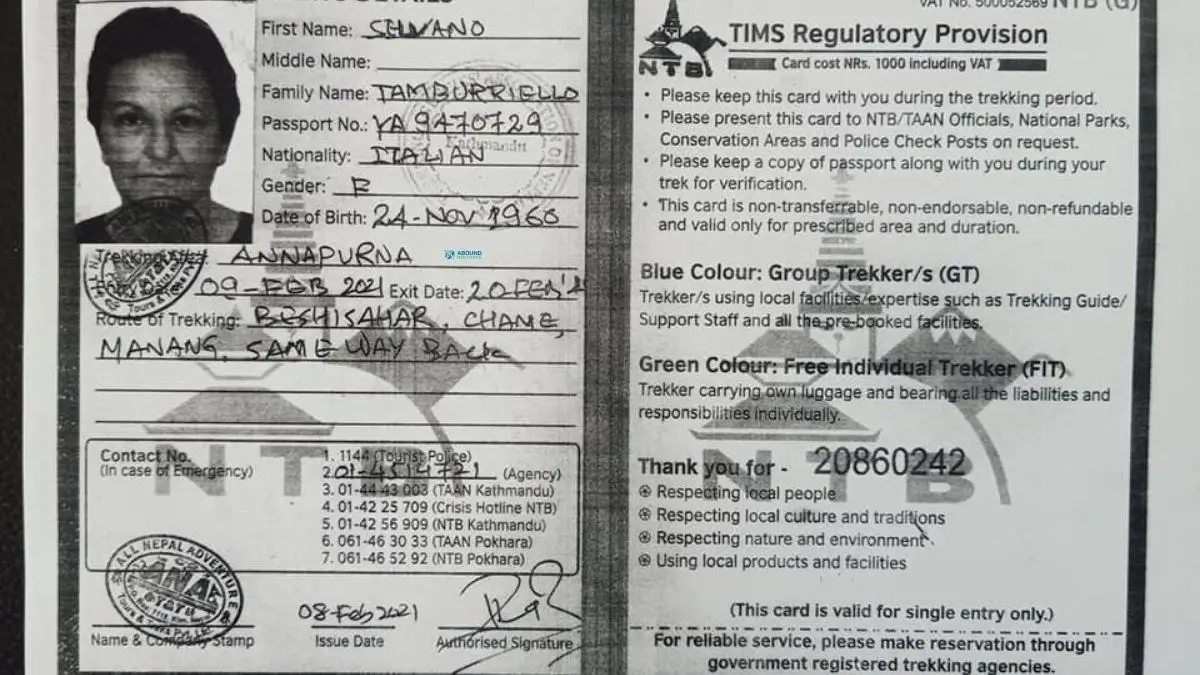
However, group TIMS may be required if the expedition group is over a certain size.
3. Restricted Area Permit (RAP)
Restricted Area Permit is only necessary if you plan to go on restricted zone in the Annapurna region. Mainly Upper Mustang, Nar Phu valley, and Dolpo are considered restricted zone and falls under the Annapurna Circuit.
Documents Needed for Annapurna Circuit Trek Permit
To apply for the Annapurna Circuit Trek Permit, you will need your passport, photos and other few things. While applying for the permit, make sure you carry some Nepali Rupees (NPR) as many offices don’t accept cards and you many need to trade USD at a lower rate.
A valid passport
4 Passport-sized photos
Nepalese Visa
Proof of travel insurance covering high-altitude
Where and How to Get Annapurna Circuit Trek Permits
Permits can be obtained from offices in Kathmandu and Pokhara, as well as in entry points at Annapurna Conservatoin Area. In some cases you can also get them online.
In Kathmandu
The Nepal Tourism Board (NTB) office is located in Pradarshani Marg, Kathmandu.
Opening Hours are Sunday to Friday from 9 AM to 5 PM.
In Pokhara
The Nepal Tourism Board (NTB) office is located near the Damside area, Lakeside.
Same working hours as Kathmandu NTB.
At entry points to the Annapurna Conservation Area
From Besisahar, a common starting point for the Annapurna Circuit
From Chame, which is a bit further along the route
From other ACAP checkposts available at certain entry locations
Make sure you process your permits early. During peak season, processing permits can take a while, which may cause you to miss your time frame. If you don’t want to deal with the hassle of getting each and every permit through waiting in line, then you can have a trusted agency like Abound Holidays process it all for you.
We at Abound Holidays take care of all your permits as part of the trek package. Contact US for a quote.
Annapurna Circuit Trek Permit Cost and Validity
Before you start your journey to the Annapurna Circuit, make sure you remember a few things. Thinking of getting the necessary permits on the way? Know how much they cost and how long they are valid for. The cost of an RAP (Restricted Area Permit) varies depending on the area you want to enter. As for the rest of the permits, like ACAP and TIMS, it’s as follows:
Permit Type | Foreign National | SAARC National | Validity |
ACAP | $25 / NPR 3000 | NPR 1000 | 30 Days |
TIMS | $15 / NPR 2000 | NPR 300 | Covers Trek Duratoin |
RAP | Varies by Region | Varies | Varies |
Note: Children below the age of 10 have either reduced or waived fees.
Permit Checkpoints on the Annapurna Circuit Trek
Along the trail, you will come across multiple checkposts where authorities check your ACAP and TIMS permits. These are done for the purpose of knowing who is on the route for emergency cases.
Main Checkpoints and Their Location
Besisahar is the starting point of your trek, where your ACAP will be checked.
Chame is next on your journey on the trek as the checkpoint
Manang will be your major stop before the Thorong La Pass to verify permits
Yak Kharka / Thorong Phedi are closer to Thorong La Pass and will have checkpoints
Muktinath / Jomsom are checkpoints you come across on your descent
Rules and Regulations for Annapurna Circuit Trek Permits
The Nepalese government, as of 2023, has introduced a new set of rules and regulations regarding trekking in Nepal. The main purpose of these rules would be for the conservation of the region, and safety & record keeping of trekkers. So, make sure you follow these guidelines:
Always carry your permits and passport at all times on the trek
Trekking without permit is illegal and will result in fines or eviction
Officials are allowed to conduct random permit checks along the way
Guides and porters are also required to carry their permits and identification
Mistakes to Avoid When Getting Annapurna Circuit Trek Permits
Even experienced trekkers can make small mistakes, which can cost extra, and even get denied at the entry points. But, fortunately, all these are easy to avoid if you are prepared enough. So, what should you be avoiding at all costs to ensure a smooth journey through the Annapurna Circuit Trek?
Forgetting to bring original documents and photos
Not having travel insurance covering high altitudes
Leaving the permit processing until the last minute
Paying permit fees in foreign currency instead of NRP
Trekking without proper permits or agency support
Skipping permit checkpoints or failing to show a permit when asked
Leaving emergency contact details on permit forms blank
If you just want to trek and not deal with all this then contact us at Abound Holidays. We will make sure you won’t need to worry about anything.
Also learn about Everest Base Camp Trek Permit.
Learn More About Annapurna Circuit Trek Here
Annapurna Circuit Trek | Annapurna Circuit Trek Accommodation | How to Prepare for Annapurna Circuit Trek | Seasonal Weather of Annapurna Circuit Trek | Essential Gears for Annapurna Circuit Trek
FAQs
What happens if I lose my Annapurna trek permit during the trek?
You should report immediately to the nearest permit office to apply for a replacement. Make sure you always carry extra photo and your passport to assist the process.
Where can I renew or extend my Annapurna Circuit permit?
Permit renewals are generally not available on the trail. So you must plan your trek duration so that you can finish your Annapurna Circuit Trek within the time limit.
Are permit checks strict throughout the Annapurna Circuit?
Yes, officials regularly check permits at key checkposts. Some officials may even ask for your permit randomly on the way. Always carry your permits to avoid delays and penalties.
Is trekking without the Annapurna Circuit Trek Permit punishable?
Yes, trekking without permits in the Annapurna Circuit is illegal and will result in fines or even removal from the trail.
Do I need a licensed guide to obtain the Annapurna Circuit permit?
Yes. As of 2023, solo trekking on the Annapurna Circuit without a licensed guide is not permitted. It has become mandatory to obtain your permit through a registered agency or a guide.
Are permits transferable or reusable for other treks?
No, permits are not transferable or reusable for other treks. These permits are usually valid for only single entry on their own route.
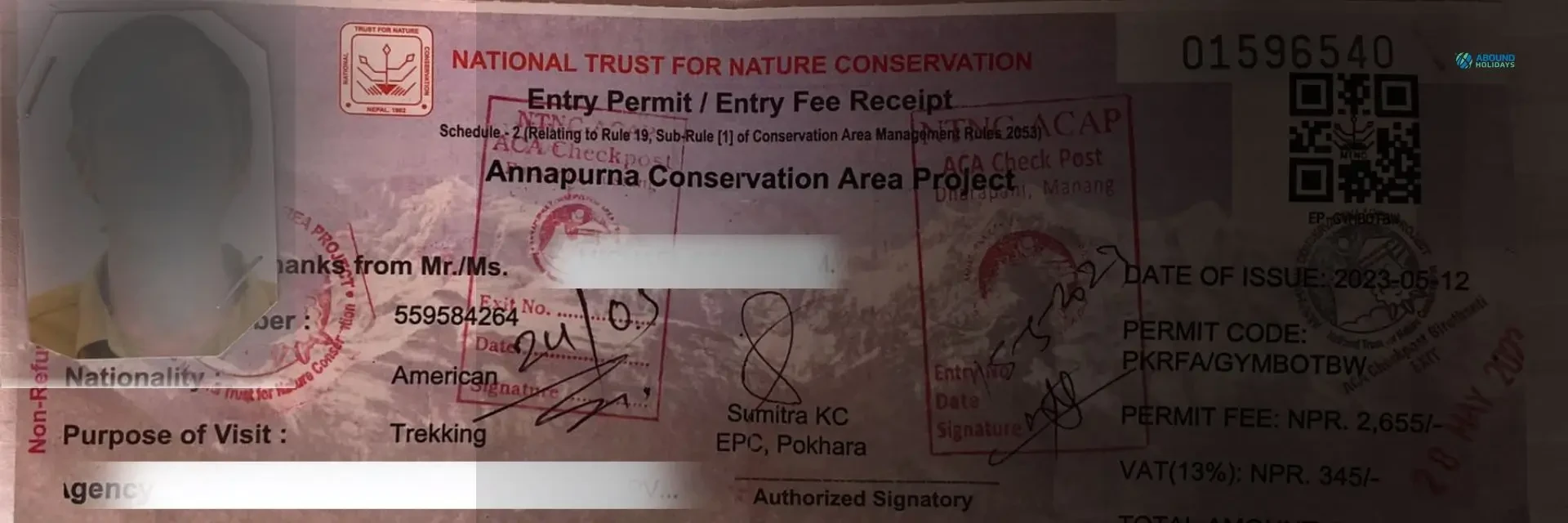
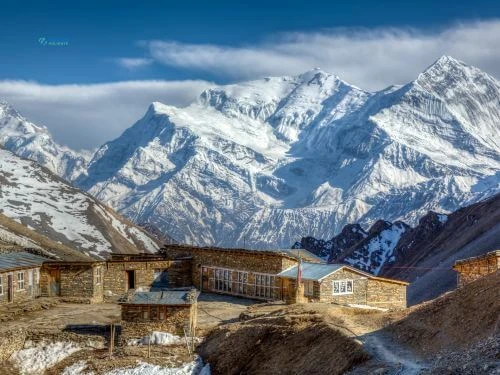
 based on 5 reviews
based on 5 reviews